Well, it took some time to analyze the patterns.
Of course, first I used http://www.onlineocr.net/ to get the text from the screenshot. Then I started match highlighting to spot patterns.
- You can see that
make_cube takes effectively two (x,y,z) tuples
- There are three groups or lines that end in the same
z value
- These three groups consist of three subgroups that end in the same
(y,z) tuple
- The x, y and z values enumerate the same pairs of values for each group.
This makes it "obvious" material for a generation loop. After some 20 minutes of refactoring I was down to
for (auto&& zs : { tie(rmin_z, imin_z), tie(imin_z, imax_z), tie(imax_z, rmax_z) })
for (auto&& ys : { tie(rmin_y, imin_y), tie(imin_y, imax_y), tie(imax_y, rmax_y) })
for (auto&& xs : { tie(rmin_x, imin_x), tie(imin_x, imax_x), tie(imax_x, rmax_x) })
{
*out++ = make_cube(get<0>(xs), get<0>(ys), get<0>(zs), get<1>(xs), get<1>(ys), get<1>(zs));
}
But you'll notice the regularity in the loop ranges. Actually we have a sequence like
coord const sequence[] = { rmin, imin, imax, rmax };
and we select consecutive pairs: (rmin, imin), (imin, imax), (imax, rmax)
// we take all consecutive pairs (warning: ignoring the `(rmax, rmin)` closing pair here)
vector<pair<coord, coord>> pairs;
transform(begin(sequence), prev(end(sequence)), back_inserter(pairs), [](coord const& it) { return std::make_pair(*(&it+0), *(&it+1)); });
Now we can loop it more directly. I've also invented a simple Cube type that allows us to pretty print the result of the generator loop so you can verify the results in DEBUG mode:
for (auto zs : pairs) for (auto ys : pairs) for (auto xs : pairs)
*out++ = Cube { { xs.first.x, ys.first.y, zs.first.z }, { xs.second.x, ys.second.y, zs.second.z } };
Live On Coliru
#include <iostream>
#include <algorithm>
#include <vector>
#include <array>
int main() {
#ifdef NDEBUG
typedef double T;
struct coord { T x,y,z; };
coord rmin { 0, 1, 2 },
imin { 3, 4, 5 },
imax { 6, 7, 8 },
rmax { 9, 10, 11 };
#else
typedef const char* T;
struct coord { T x,y,z; };
coord rmin { "rmin_x", "rmin_y", "rmin_z" },
imin { "imin_x", "imin_y", "imin_z" },
imax { "imax_x", "imax_y", "imax_z" },
rmax { "rmax_x", "rmax_y", "rmax_z" };
#endif
using namespace std;
// the source sequence
coord const sequence[] = { rmin, imin, imax, rmax };
// we take all consecutive pairs (warning: ignoring the `(rmax, rmin)` closing pair here)
vector<pair<coord, coord>> pairs;
transform(begin(sequence), prev(end(sequence)), back_inserter(pairs), [](coord const& it) { return std::make_pair(*(&it+0), *(&it+1)); });
// Now we build cubes. The `make_cube` interface implied it requires two
// coordinates to be constructed:
struct Cube { coord p1, p2; };
std::array<Cube, 3*3*3> cubes;
// generate!
auto out = cubes.begin();
for (auto zs : pairs) for (auto ys : pairs) for (auto xs : pairs)
*out++ = Cube { { xs.first.x, ys.first.y, zs.first.z }, { xs.second.x, ys.second.y, zs.second.z } };
// debug print
for(auto const& c : cubes)
std::cout << "make_cube(" << c.p1.x << ", " << c.p1.y << ", " << c.p1.z << ", " << c.p2.x << ", " << c.p2.y << ", " << c.p2.z << ")\n";
}
Conclusions:
- My code looks more complicated. It probably is. But it's much easier to see whether typos were made
Regarding the question
Is this really a problem?
Well, let's put it this way. That code up there may as well be wrong
Indeed, I have a bit of a doubt whether you covered all your cases. See the first comment:
// we take all consecutive pairs (warning: ignoring the `(rmax, rmin)` closing pair here)
